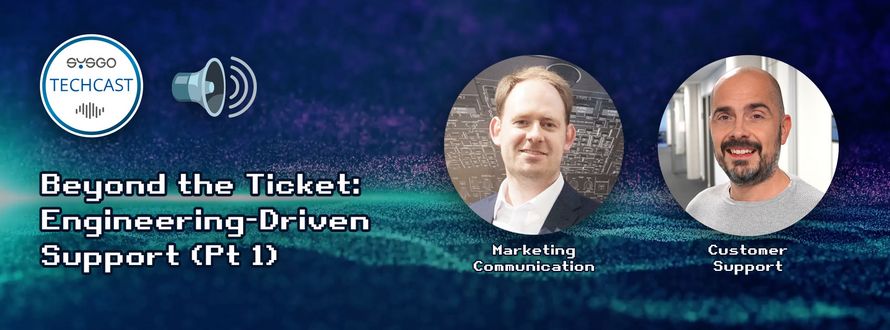Delivering support for real-time operating systems in safety- and security-critical domains requires more than conventional ticket handling—it demands deep engineering expertise, transparency, and adaptability. This TechCast explores how an engineering-driven support model ensures reliability and effectiveness from day one.
Direct Access to Engineering Expertise
Support begins with direct interaction between end users and engineers familiar with both hardware and real-time operating system (RTOS) intricacies. This hands-on involvement accelerates issue diagnosis and resolution, enhancing response quality for developers, architects, and integrators—all of whom benefit from expert insight from the outset.
Unified Development Environment: The Backbone of Productivity
The integrated development environment (IDE), CODEO, serves as the central platform for developers working with RTOS and embedded Linux. It consolidates monitoring, tracing, debugging, and configuration into one streamlined toolset—whether through GUI components or command-line functionality.
More on CODEO
Support Services Tailored to Your Needs
Upon product purchase, a standard support contract activates—with coverage for configuration, installation, and bug reproduction. Based on the nature of the issue (configuration vs. project-specific), requests are routed appropriately—either to specialized component owners or dedicated support engineers.
For additional needs, extended packages such as long-term or certification support can be added. These offer prioritized assistance and are ideal post-deployment or during active project phases.
Supporting Certification Lifecycles
In certification-bound projects, support extends beyond usual bug fixes. Customers receive timely documentation, updates, and corrective artifacts tied to the certification kit. This ensures continued compliance and reflects a proactive support posture throughout the product lifecycle.
On-Site Collaboration for deeper Engagement
When projects involve hardware customization—such as bespoke Board Support Packages—support often steps beyond remote communication. Engineers can visit client sites to troubleshoot directly, accelerating issue resolution through face-to-face collaboration.
Unique Challenges of Type-1 Hypervisor Support
Supporting a bare-metal Type-1 hypervisor introduces hardware-level complexity: Memory allocation, device drivers, partitions, and virtualization require intimate knowledge of underlying components. This stands in contrast to Type-2 hypervisors that abstract these layers.
Additionally, different "personalities" (e.g., POSIX, ARINC, embedded Linux) operating atop the hypervisor add layers of complexity. The support model is structured so that all licensed components—from hypervisor to Linux partition—receive dedicated support as per the product configuration.
Conclusion
Engineering-driven support for real-time, safety-oriented embedded systems goes far beyond traditional helpdesks. With direct access to technical expertise, centralized tooling via CODEO, modular support contracts, certification alignment, and a hardware-savvy approach to RTOS management, this model empowers teams to build and maintain high-assurance systems with confidence.

